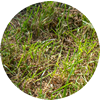SUSTAINABILITY MATTERS
OUR RECYCLING INITIATIVE
We are committed to environmentally sustainable practices. As a part of this on-going commitment, we invested heavily into our recycling and sustainability programs. In 2018 alone, this initiative helped us reclaim 700 cubic yards of organic materials and 2500 tons of clays, soils and gravel.
Our Recycling Process


We care about things that matter to you and your customers. So, as a part of our regular operations, we partner with you and your sustainability goals by capturing and recycling materials. This approach has multiple benefits:
An Improved Bottom Line
- Lower Costs: Avoiding expensive landfill fees and using recycled or reusable materials instead of buying new reduces your cost
- Higher Revenue: Using green, sustainable, and environmentally responsible services allows you to command higher rental and lease rates from your tenants
Sustainable Practices
Sustainability matters to us, but we have been listening and know it matters to you too.
Working with us allows you to do your part in capturing carbon and reducing the environmental footprint of your property. It also helps keep waste out of already scarce landfill space.
See our recycling process below to see how we do this.
Qualification for LEED Credits
Many of LECM’s customers are LEED Certified and benefit from using vendors that can assist in qualifying for credits toward their LEED program. LECM’s sustainable practices qualify for these credits, which can be claimed and used by our clients. For clients who are not LEED Certified, using LECM can help with the certification process, and at a minimum ensure that their facilities are contributing toward environmental sustainability and taking care of the planet that we all share.
Our Recycling Process
Our recycling is broken down into five steps: Collect, Process, Reuse, Recycle, and Waste.

Collect

Clays and Soils: When soil, clay, rocks, and organic materials are excavated from landscaping projects, we screen the products at our recycling facility to separate them so they can be processed and reused in other projects.

Organics: Grass, sod, leaves, and weeds are collected by our landscaping maintenance staff and brought back to our recycling facility to be composted. Branches are collected by our arborists, chipped and added to the facility compost piles.

Gravel: During spring cleanups, gravel is swept and collected by our snow and ice management staff from sites where it was applied during the winter and returned to our recycling facility to be screened and reused next year.

Garbage: Along with the other materials, an amount of actual garbage (or diseased plant material) is collected, separated from good materials, and disposed of.
Process
Once at our recycling facility, materials are loaded into a screener, a machine designed to separate materials. After the separation process occurs, we stockpile the materials into piles of clays, loam, and gravel for reuse. We also capture materials like organics, concrete, asphalt, and screening fines (dust particles) that can be recycled into new purposes. See the Recycle step below for more information on these materials.

LECM’s Recycling Facility
Reuse
According to the Canada Green Building Council, 35 per cent of landfill waste comes from construction and demolition activities. Reusing materials keeps them out of the waste stream. Also, when products are reused, pollution generated in creating new materials is lessened and the energy originally invested in creating the material is preserved.
Reusing clays, soils, and gravel eliminates the need to obtain these materials as new, bringing down your project expense.
Here’s what we reuse:
Clays and soil: Once clays and soil are screened, we harvest the loam and use it in landscaping projects. Clays and rocks are used as base materials for concrete and interlocking paving projects.
Gravel: Gravel that is collected from snow maintenance sites is screened to remove fines (fine dust) and garbage. The gravel is then stored for reuse the following winter season.

LECM’s Recycling Piles
Recyle
To recycle something is to reprocess an item so that it can be used in a different application than before. It essentially becomes its own new raw material.
Here’s what we recycle:

LECM’s Organics Compost Pile
Organics: Grass, sod, leaves, weeds, and branches are composted into rich organic material that is blended with our screened loam and used for landscaping projects like garden beds and sod installation for better growth and optimal plant health.
Concrete and Asphalt: All concrete and asphalt collected is delivered to external concrete and asphalt recyclers.
Fines: When gravel is collected by sweepers, dust materials (called fines) are separated out in the screening process. These fines are ideal for use in construction applications that require a compacted, level surface, like interlocking paving patios and walkways, or gravel road maintenance. It also means a substantially lower cost than conventional new materials.
Waste
After all of our collection, processing, reusing and recycling, what’s left is actual garbage. Only garbage and diseased plant material are taken to the landfill to be disposed.
Thank you!
Thank you for partnering with us in your sustainability goals! Together we are making a difference in this city we call home.
If you’re not yet a customer, contact our sales team for your landscape construction and maintenance needs.



